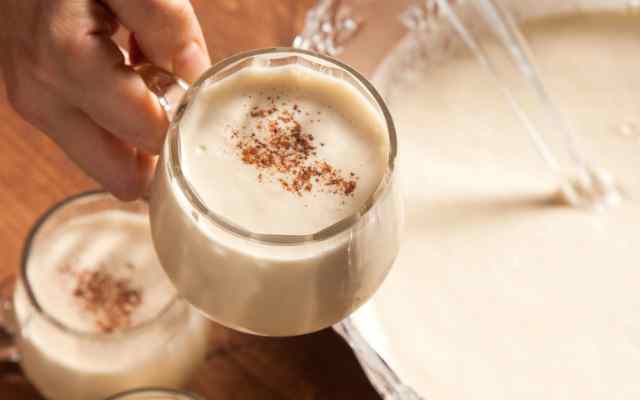Is Your Eggnog Safe for Family and Friends?
TEXARKANA, Ark. –
I’m really not trying to be a Scrooge, but I have issues with eggnog. Traditionally, eggnog is made by combining raw eggs with milk or cream, sugar, flavorings and perhaps alcohol. What could be wrong with that?
What makes homemade eggnog unsafe?
Homemade eggnog, a tradition in many families during the holiday season, causes many cases of Salmonella. What is the ingredient responsible? Usually raw or undercooked eggs.
Eggs are a standard ingredient in most homemade eggnog recipes, giving the beverage its characteristic frothy texture. You can still make your favorite eggnog recipe, but you need to follow these guidelines for safe handling.
If you want to use a favorite family recipe that calls for uncooked eggs, substitute a pasteurized egg product. There are several pasteurized egg products on the market; they can be whole eggs out-of-the shell or low-cholesterol egg white products. These items are all available pasteurized, meaning they have been heated thoroughly to kill any potential bacteria. Pasteurized egg products can usually be found in the dairy or freezer sections in the grocery store.
If using raw eggs, then cooked egg base is the only way to assure a safe cup of eggnog. It is easy to make a cooked egg base, and it will not harm the taste or quality of your eggnog.
How to make a cooked eggnog base
- First, combine eggs and half the milk as indicated in the recipe. Other ingredients, such as sugar may be added at this step.
- Then cook the mixture to an internal temperature of 160 °F, stirring constantly. The cooking will destroy Salmonella, if present. At this temperature, the mixture will firmly coat a metal spoon; don’t lick the spoon if the custard is not fully cooked.
- Finally, after cooking, chill the mixture before adding the rest of the milk and other ingredients. You can add your favorite spices and liqueurs before serving.
Contrary to what some people think, adding rum, whiskey, or other alcohol to the recipe will not make the eggnog safe. Adding alcohol cannot be relied upon to kill bacterial growth, which may be present in raw eggs. Also, if you’re thinking calories, just 1.5 ounces of rum, which is one small shot glass, adds 97 more calories.
There are lots of calories in most eggnogs. Just one half cup of regular-store bought eggnog can have 180 calories with 80 of them from fat. Much of this fat is saturated and hits 25 percent of the Daily Value for saturated fats, real fast. Even the so-called “light” eggnogs can provide 110 calories for one half cup. So you may want to limit the amount you drink.
On top of the fat calories, there is a lot of sugar in most store-bought eggnogs. They can have 4-5 teaspoons of sugar in half a cup of eggnog.
So what is the alternative if you want to serve eggnog this year but don’t want to make it yourself?
Buy commercially prepared eggnog in the dairy section of your grocery store. Most are safe, but make sure it has been made with pasteurized milk and eggs. This will reduce any food safety concerns. Just keep it refrigerated. Look for the lower fat and lower sugar versions in your store, if you can find it. I haven’t seen any low fat in our stores.
I know a cup of eggnog is a must for some families at special gatherings and I’m not recommending that you skip this tradition. I’m just suggesting you re-think what you’ve always done. By following these safe handling and proper cooking practices, you can enjoy delicious, creamy homemade eggnog without worrying about making anyone sick!
That doesn’t make me a Scrooge, does it?
By Carla Due
County Extension Agent - FCS
(870) 779-3609
cdue@uada.edu
